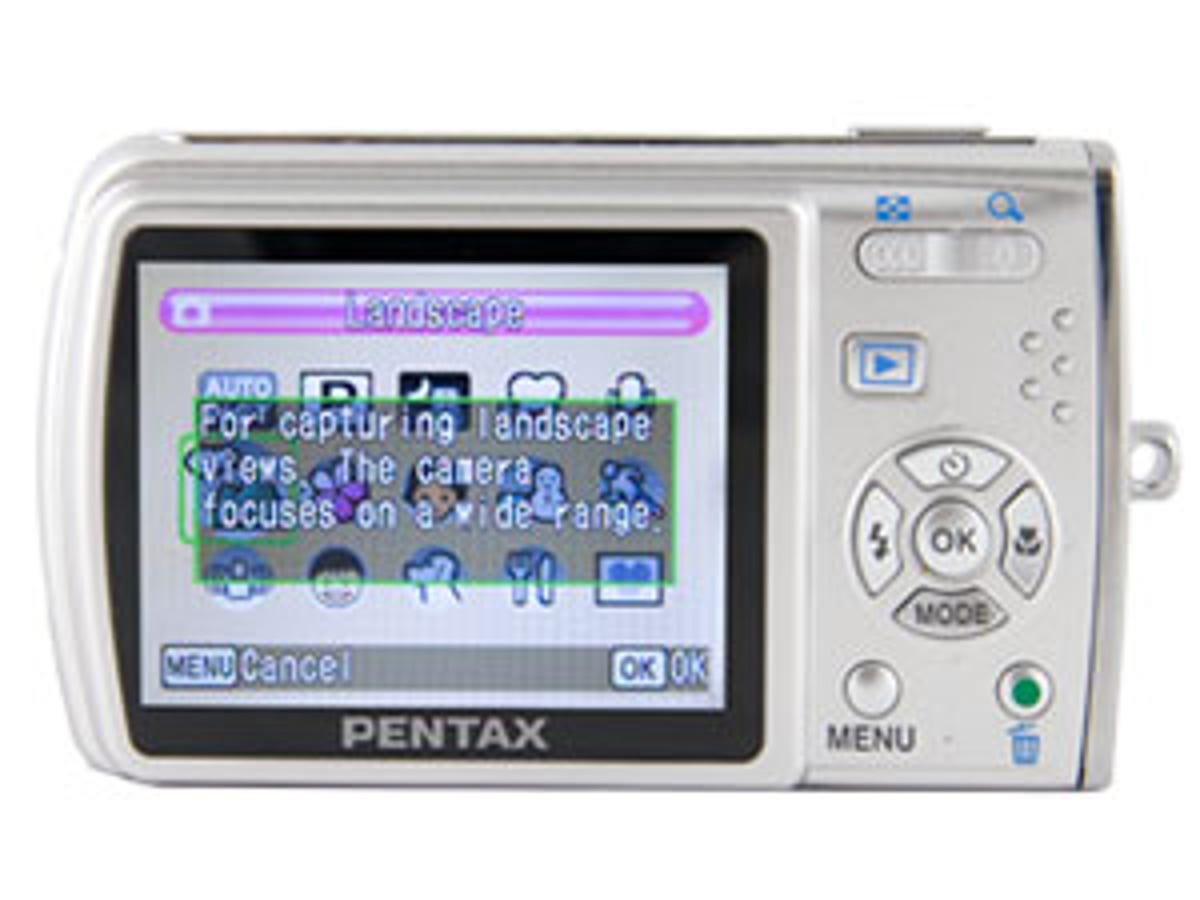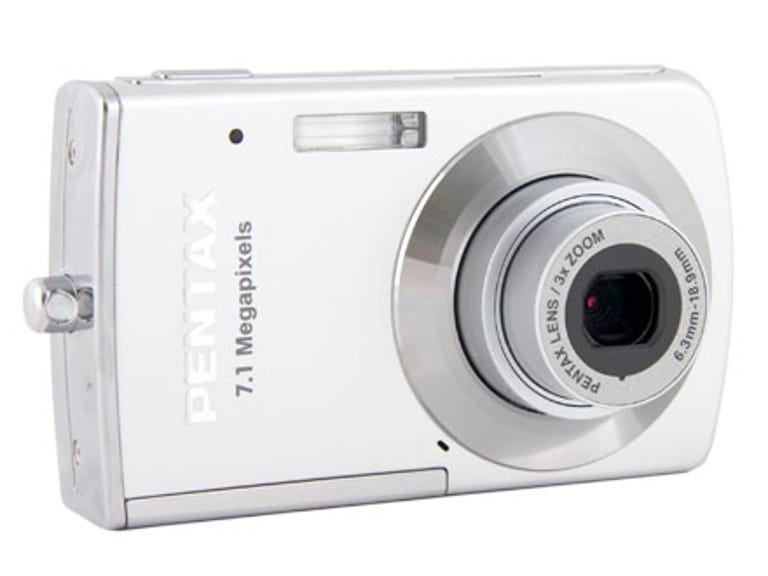 Why You Can Trust CNET
Why You Can Trust CNET Pentax Optio M30 review: Pentax Optio M30
Top choice for kids is the Pentax Optio M30 -- a slim, 7-megapixel point-and-shoot that, among other things, can meow like a cat when you take a picture. It costs just £110, and its pictures are more than acceptable for its young target market
The Pentax Optio M30 is a 7.1-megapixel budget compact camera with a sylph-like profile. The user interface is straightforward and cheerful, with smiley emoticon-style labels for the menu options and different sounds available when buttons are pressed.
The Good
The Bad
The Bottom Line
Like most compacts these days, it includes a 3x zoom and 64mm (2.5 inch) screen, but it also packs some unexpected features.
Design
The Optio M30 is incredibly pocket-friendly, measuring a slim-and-slender 18mm deep and weighing 135g. The camera is slightly flared at one end and curves at the other, giving a grippable bell-like shape. The aluminium body is solid, although the battery cover feels a tad flimsy when open. Shiny accents look good although watch out for fingerprints. The USB port is uncovered, which will always have the potential for fluff, dust and foreign matter to penetrate the camera.
On the back, a raised group of dots provides grip for the thumb. The buttons are chunky and clearly marked, but look and feel a touch cheap on the otherwise stylish silver body.
Features
With its cute cartoony menu icons, the M30 is aimed at younger photographers. The usual suspects are rounded up in the mode menu -- sport, portrait, landscape and so on -- as well as gimmicky modes for snapping pets and food. The gimmicks continue with novelty frames -- they're tacky but at least provide space for you to add better ones, should you be inclined.

Top of the tacky list -- or brilliant, depending on your age and general disposition -- is the option to change the sound made when buttons are pressed. One option is the sound of a cat meowing. Fortunately there is a volume button and the option to turn all sounds off.
Playback mode boasts a number of nifty editing options, allowing you to rotate and crop your pictures, fix red eye and even strip out particular colours for that Sin City look.
The M30 also makes some more advanced features accessible with a single push of the OK button. This brings up a brightness histogram and activates the 'bright and dark portions' feature. This feature colours in red areas of the image that are blown out, or yellow for areas that are too dark.
It's commendable that these features are so simple to access and not buried in the menus. Combined with a clear beginner's guide to image resolution and file sizes in the manual, these features make the M30 experience more interactive and educational than the standard point-and-shoot compact.
Performance
Hassle-free point-and-shoot is enabled with a dedicated 'green mode'
button. In green mode, you can choose to turn the flash off or use the
different macro options, but all menu and programmable options are
locked. The automatic mode is capable in good lighting conditions, and
face recognition works reasonably well without being outstanding. More
complicated scenes do tend to overwhelm the autofocus, which also
struggles in low light. The autofocus tends to fail in the dark due to
the lack of a focus-assist lamp.
Unfortunately, shake reduction mode employs the automatic fast shutter/high ISO combination, rendering it less useful when light is poor. Low-light sensitivity goes up to ISO 3,200 but shots at that level are unusable; noise in darker conditions creeps in from ISO 800 upwards. Noise reduction software that tries to reduce the speckles only serves to muddy remaining detail.
The M30's struggle with low light isn't helped by the level of compression that crunches files down to a memory-friendly size. Even in our typically lit lab tests, when colour was produced well and response time was respectable, image quality wasn't always up to scratch, presumably due to compression. We also encountered some distortion from the lens, especially when zoomed in.
Conclusion
The Pentax Optio M30 is a super-slim and
highly affordable compact. Picture quality is fine for Web and small
prints but mediocre in low light. A fully automatic one-touch 'green
mode' makes point-and-shoot snapping easy, but digital image
stabilisation is not the best system and leads to problems in all but
the best lighting conditions.
Some interesting onscreen features to correct the brightness of your pictures give it an edge over similarly basic budget cameras like the Olympus FE-230 or Casio Exilim EX-Z70.
Many of the M30's attributes are cheerfully childish, but it is worth considering over the similar-featured E30 for more style-conscious younger photographers.
Edited by Jason Jenkins
Additional editing by Kate Macefield


